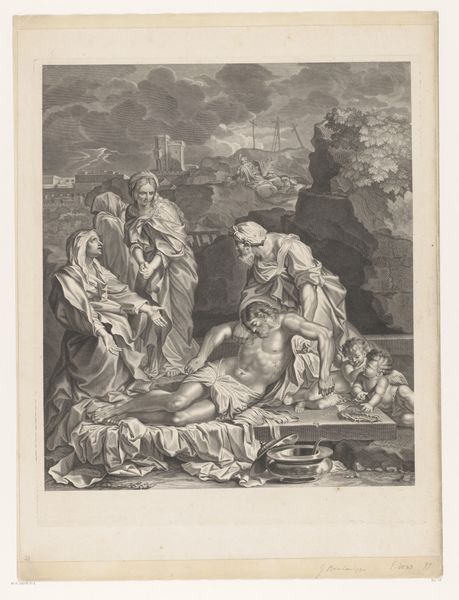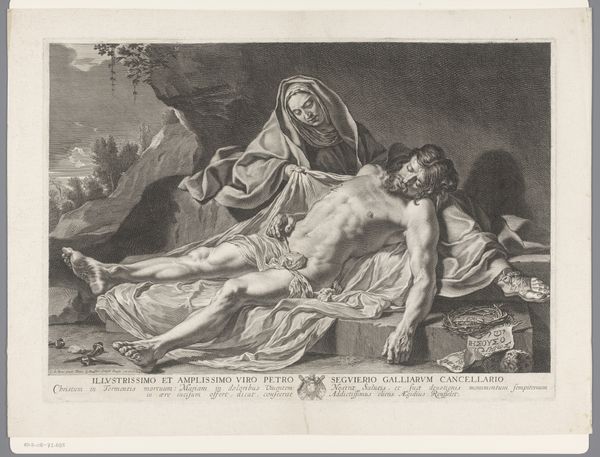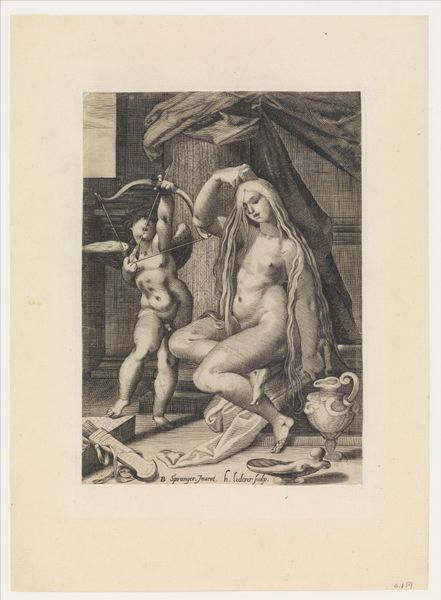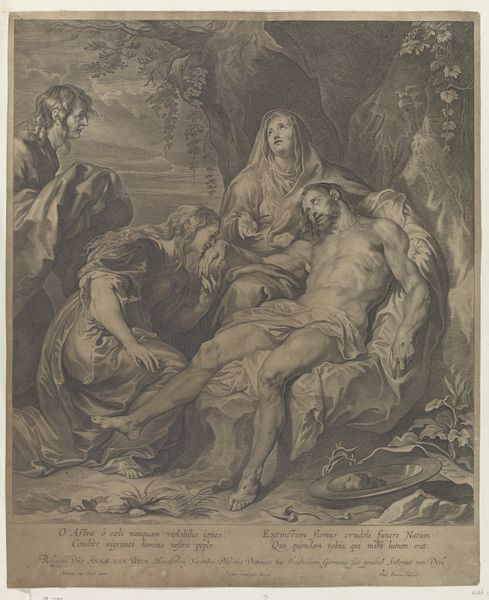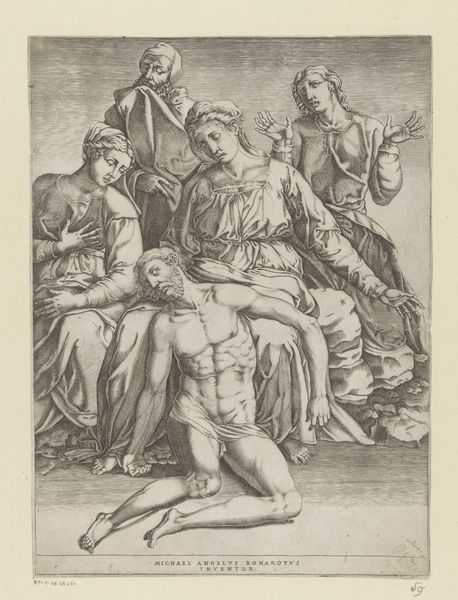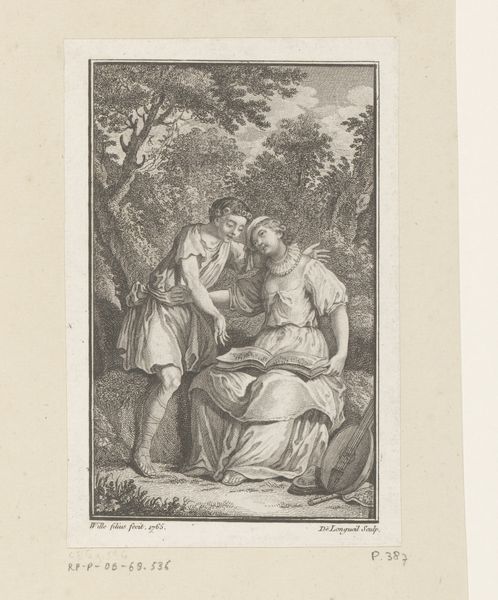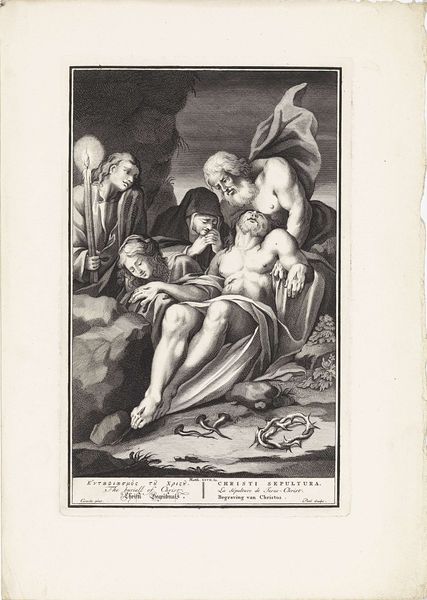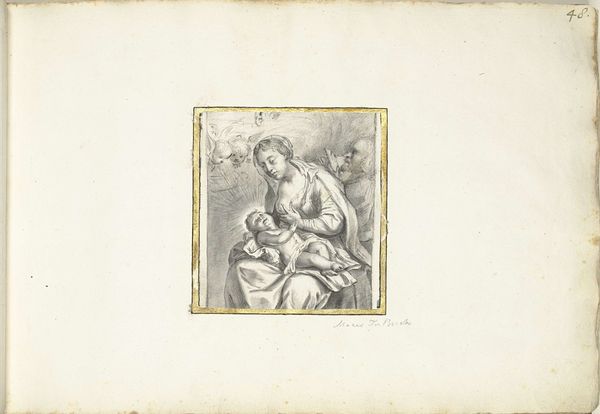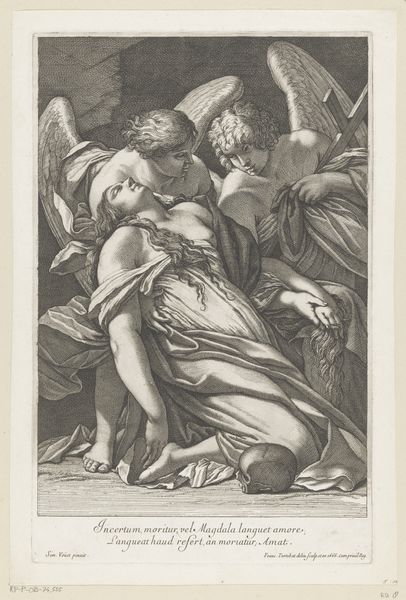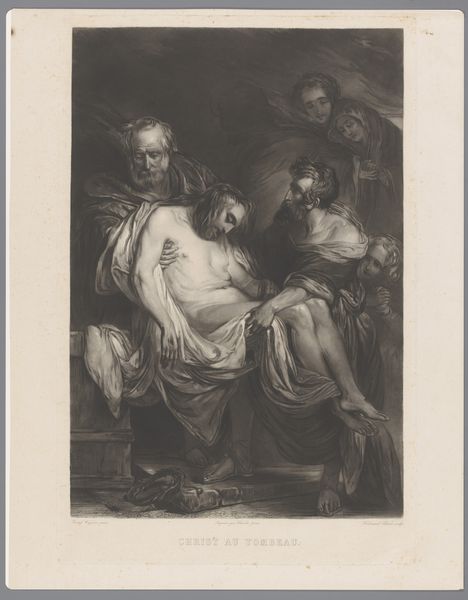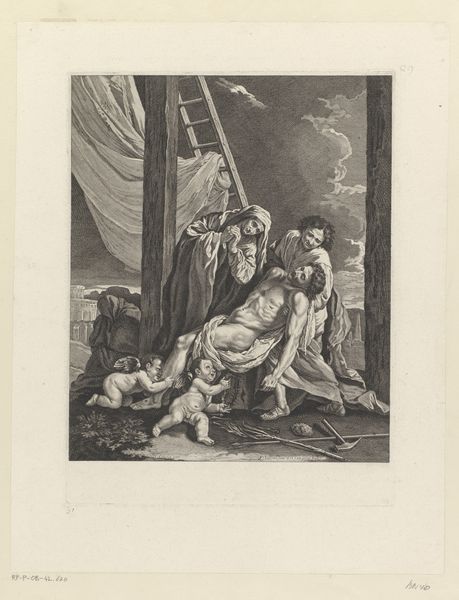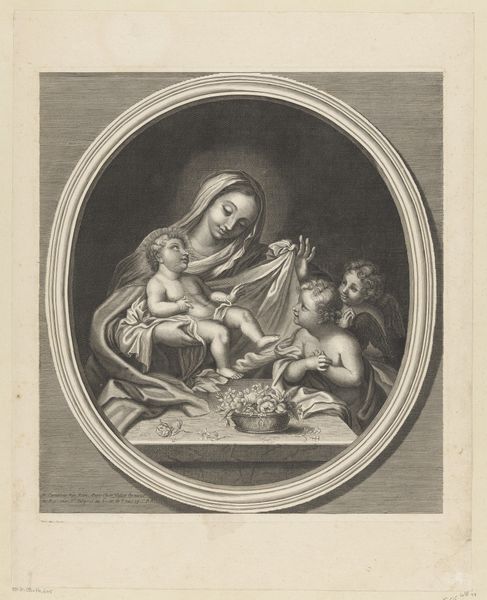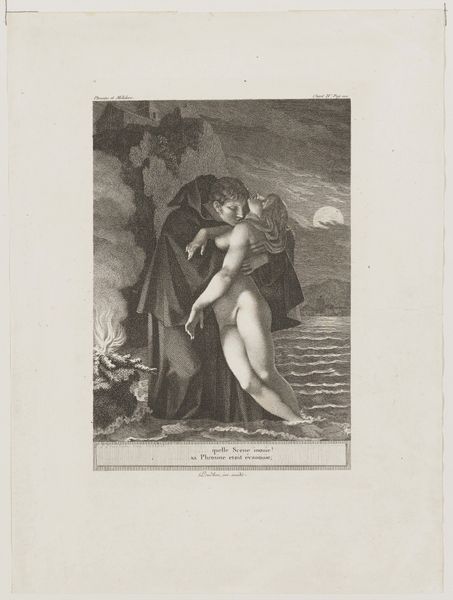
print, engraving
#
baroque
# print
#
old engraving style
#
figuration
#
portrait drawing
#
history-painting
#
nude
#
engraving
Dimensions: height 227 mm, width 164 mm
Copyright: Rijks Museum: Open Domain
Isaac Beckett produced this mezzotint, “Bewening,” in the late 17th or early 18th century, using a technique that allowed for rich tonal variations and detailed shading. The image depicts the Virgin Mary cradling the body of Christ after the crucifixion. This emotive scene would have resonated deeply within the religious and social context of Beckett's time in England, a period marked by religious tension and shifting political landscapes. The visual language of the print, with its dramatic lighting and emphasis on emotional expression, is derived from the traditions of baroque art, which was widely used by the Catholic church for propaganda in the counter-reformation. However, Beckett's style reflects the influence of the Dutch ‘Leiden school’, and may reflect the presence of Dutch printmakers in London at this time. To understand this print more fully, we can consider how the institutions of religion, art, and politics intersect in Beckett’s England. Scholarly databases, primary source documents, and critical analyses can give insight into the cultural values that shaped both the production and reception of images like “Bewening.”
Comments
No comments
Be the first to comment and join the conversation on the ultimate creative platform.
